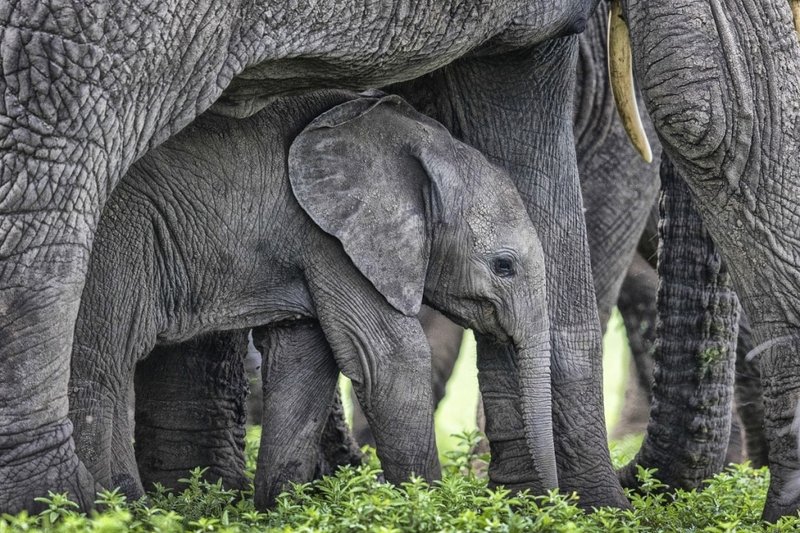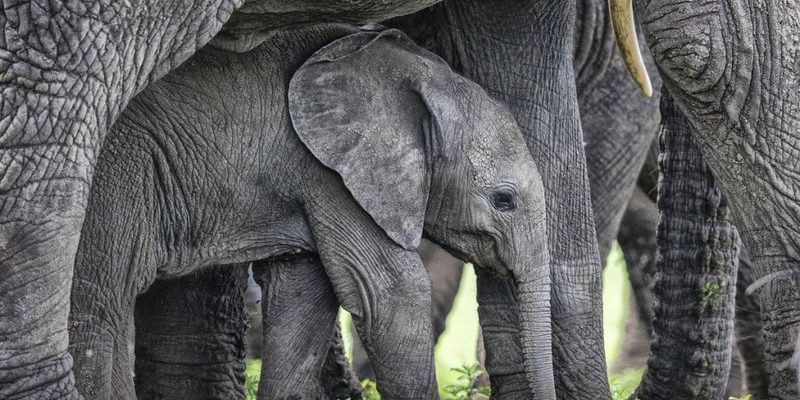
Let’s dive into the heart of the issue. The African elephant, the largest land mammal on Earth, faces a slew of threats that put its survival at risk. Imagine a puzzle with missing pieces—each piece represents a factor that jeopardizes the future of these elephants. As we explore their situation, we’ll touch on everything from habitat loss and poaching to conservation efforts and what you can do to help. So, grab your metaphorical cup of coffee, and let’s unravel the story of the African elephant together.
Understanding the African Elephant
The African elephant can be divided into two species: the African forest elephant and the African savanna elephant. They’re more than just different names; each has unique traits and habitats. The savanna elephant is larger with bigger ears, adapted to life in the open grasslands, while the forest elephant is smaller and more elusive, living in dense jungle areas. Both species play a crucial role in their ecosystems, helping to shape the environment by creating paths and clearing bushes, which benefits other wildlife.
Here’s the thing—these gentle giants can communicate over long distances through low-frequency sounds that humans can’t hear. This ability helps them maintain social bonds and coordinate group activities. But just as these elephants are fascinating, they’re also facing a grim reality. With every passing year, their numbers dwindle due to the challenges they face in the wild.
The Threat of Habitat Loss
One of the main reasons the African elephant is endangered is *habitat loss*. As human populations grow, more land is needed for farming, cities, and infrastructure. This encroachment on elephant territory is like putting up walls around their home. They can’t roam freely, which is critical for their survival.
When elephants can’t migrate to find water or food, they end up in conflict with humans. Imagine a family gathered around a dinner table, and suddenly they have to share the meal with unexpected guests. Tensions rise, and chaos ensues, similar to what happens when elephants cross paths with farmers trying to protect their crops. These conflicts often lead to elephants being killed or relocated, further pushing them towards the brink of extinction.
The Poaching Crisis
Poaching is another severe threat to the African elephant population. This illegal activity primarily targets elephants for their ivory tusks. Ivory has been prized for centuries, leading to a black market that fuels the killing of these animals. Here’s a startling fact: more than 30,000 elephants are killed each year for their ivory. That’s roughly 100 elephants every day!
The poaching crisis doesn’t just affect elephants; it disrupts entire ecosystems. Elephants help maintain vegetation and disperse seeds, which contributes to a balanced habitat. If they’re removed from the environment, you can imagine how quickly the delicate balance can tip, leading to a decline in biodiversity.
Conservation Efforts and Their Importance
Fortunately, not all hope is lost. Numerous organizations and governments are working tirelessly to protect African elephants. Conservation methods include anti-poaching patrols, habitat restoration, and community education to raise awareness about the importance of elephants and the benefits they bring to ecosystems.
For example, many programs provide alternative livelihoods for local communities, reducing their dependency on poaching. When people see elephants as valuable contributors to their environment and economy, they’re more likely to protect them. It’s like shifting the narrative from “They’re in my way” to “They’re essential to our survival.”
These efforts show that when we come together to support conservation, we can make a difference. However, it requires ongoing commitment and resources, which can be a challenge in regions with many competing needs.
How You Can Help
You might be wondering how you can get involved in the fight to save the African elephant. Here are some simple yet impactful ways:
- Support Conservation Organizations: Research and donate to reputable organizations that focus on elephant conservation.
- Educate Yourself and Others: The more you know, the better equipped you are to advocate for elephants and their habitats.
- Be an Informed Consumer: Avoid products made from ivory or those that harm wildlife.
- Spread Awareness: Share information on social media or in your community to inspire others to take action.
Small actions can lead to big changes. Every effort counts in the fight against extinction.
Future Outlook for African Elephants
While the situation for the African elephant remains dire, the future is not entirely bleak. Thanks to the dedication of conservationists and growing awareness worldwide, there’s potential for recovery. Countries like Kenya have seen a rise in elephant populations due to strict anti-poaching laws and community involvement in conservation efforts.
However, the path forward requires continued vigilance and action. Protecting elephants is not just about saving a single species; it’s about preserving an entire ecosystem. When elephants thrive, so do countless other species, creating a healthier planet overall.
In conclusion, the African elephant is indeed facing significant threats that put it on the endangered list. But we can’t afford to look away. As we’ve discussed, understanding the challenges they face—from habitat loss to poaching—helps us see how interconnected our world is. Every loss of an elephant echoes throughout the ecosystem, impacting everything from the plants they feed on to the smaller animals that rely on their presence.
By engaging in conservation efforts, educating ourselves, and promoting awareness, we can stand as allies for these majestic animals. Let’s work together to ensure that future generations will marvel at the African elephant in its natural habitat, rather than just in stories or memories. Remember, every small action contributes to a brighter future for both elephants and our planet.

